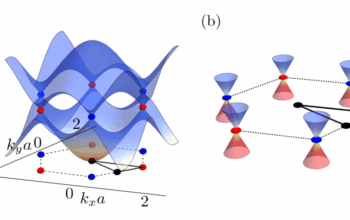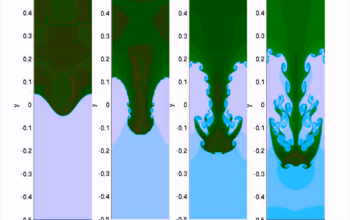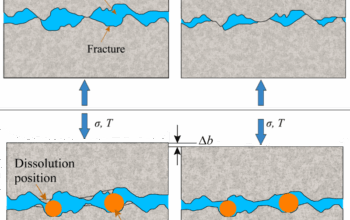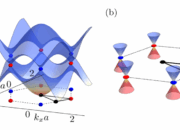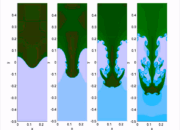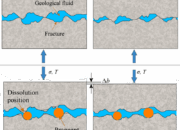The vastness of the cosmos presents a profound enigma, akin to gazing into a boundless ocean. Each star, galaxy, and interstellar gas cloud constitutes a droplet of cosmic water, contributing to a bewildering tapestry that constantly shifts and transforms. Among these celestial phenomena, gas clouds play an integral role in measuring cosmic distances, functioning as both markers and messengers in the grand schema of the universe.
When discussing cosmic distance measurements, one must first appreciate the underlying principles of light and its interaction with matter. The universe is fundamentally a svetnaya realm, where light traverses immense distances across the void. The speed of light, approximately 299,792 kilometers per second in a vacuum, serves as a universal constant that anchors our ability to gauge astronomical distances. However, it is not merely the velocity of light that facilitates these measurements; rather, it is the interaction of light with the ubiquitous gas clouds that reveals hidden truths about the fabric of space itself.
Gas clouds, comprised predominantly of hydrogen and helium along with trace amounts of other elements, manifest in various forms—molecular clouds, ionized regions, and supernova remnants. These structures serve as both indicators of stellar formation and as agents of cosmic evolution. The spectral composition of light emitted or absorbed by these clouds contains invaluable data, enabling astronomers to ascertain their distances through a variety of methodologies.
One primary technique involves the application of redshift measurements. When light emitted from a distant gas cloud is observed, its wavelength may be redshifted—the phenomenon wherein the light stretches towards the longer, redder wavelengths of the spectrum. This redshift correlates with the velocity at which the gas cloud recedes from the observer, a consequence of the universe’s expansion. According to Hubble’s Law, this redshift is directly proportional to the distance of the gas cloud from the observer, thus allowing astronomers to calculate the cosmic expanse separating us from these celestial objects.
Intriguingly, the varying physical conditions within gas clouds lead to distinct spectral signatures. The temperature, density, and composition of these clouds influence the emission lines produced in the spectrum of light. For instance, when hydrogen atoms in a gas cloud absorb and re-emit light at particular wavelengths, they generate a characteristic pattern that can be discerned by spectrographs. This unique fingerprint of the gas cloud, with its distinct emission lines such as the H-alpha line, offers detailed insights into its constituents, thus enriching our understanding of the universe’s composition.
Furthermore, the concept of cosmic parallax presents another illuminating avenue for measuring cosmic distances. Parallax involves observing an object from two distinct vantage points and noting the apparent shift in its position relative to a more distant background. For gas clouds located within our galactic neighborhood, this method provides a direct means of distance measurement. The displacement observed from Earth, compared to the position of more remote stars, yields crucial data on the distance of nearby gas clouds, anchoring our observational framework and enhancing the precision of our cosmic cartography.
A more complex yet equally fascinating technique involves the utilization of variable stars as standard candles. Some gas clouds harbor these pulsating stars, such as Cepheid variables, whose luminosity fluctuates predictably over time. By determining the period of these pulsations, astronomers can ascertain their intrinsic brightness and, when compared to their observed brightness, calculate their distances. These standard candles, scattered throughout gas clouds, illuminate cosmic pathways and extend the reach of our measurements to the farthest confines of the universe.
As the scientific community delves deeper into the study of gas clouds and their role in distance measurement, the implications extend beyond mere numbers. Gas clouds serve as cosmic laboratories, wherein the processes of stellar formation unfold and life cycles of matter are demonstrated. They are the crucibles from which stars and planets emerge, thus allowing us to trace the narrative of cosmic evolution. The distances we measure are not only coordinates in a celestial map but are also reflections of time—time that encapsulates eons of stellar birth, death, and rebirth.
Moreover, the interaction of gas clouds within the universe facilitates a deeper understanding of the large-scale structure of the cosmos. Cosmic filaments comprise vast networks of gas, dark matter, and galaxies, revealing the intricate web that underpins the universe. Tracking these gas clouds allows astronomers to unravel the mystery of dark matter, the elusive component that constitutes a substantial fraction of the universe’s mass. The subtle gravitational influences of gas clouds upon one another further guide our comprehension of gravitational lensing, which bends light due to the presence of mass, resulting in observable distortions of distant objects.
In conclusion, the study of gas clouds as tools for measuring cosmic distance presents a multifaceted picture of the universe. These celestial entities bridge the gap between tangible measurements and abstract cosmic phenomena. They serve not only as markers of distance but also as critical components of our understanding of cosmic evolution. The interplay of light, distance, and gas clouds weaves a narrative that enriches our perception of the cosmos—a narrative that interlaces the past with the present, forging connections that transcend the bounds of mere physicality. Through the lens of gas clouds, we are invited to ponder our own place within this magnificent universe, forever striving to uncover the secrets that lie beyond the horizon of human comprehension.

